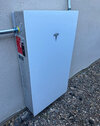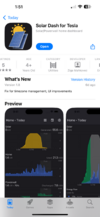For comparison, I've had my four Powerwalls installed for just over a year. In that time, I've already had 22.8mWh pass through my batteries. There is no VPP here, I'm solely using self-consumption. My batteries are charging and discharging on a daily basis.
Even if you divide that by four (to determine for each Powerwall), that's 5.7 mWh in one year. For the stated warranty terms of 37.8mWh, I'd hit the end of my warranty at just past 6.5 years, if VPP is truly in the second category. I suppose that's the magic question.
View attachment 972568






